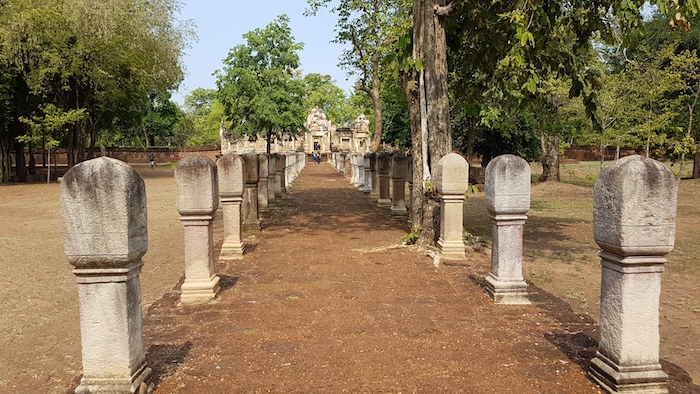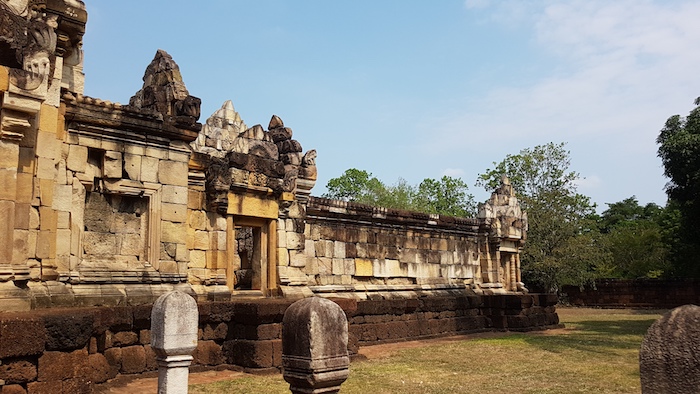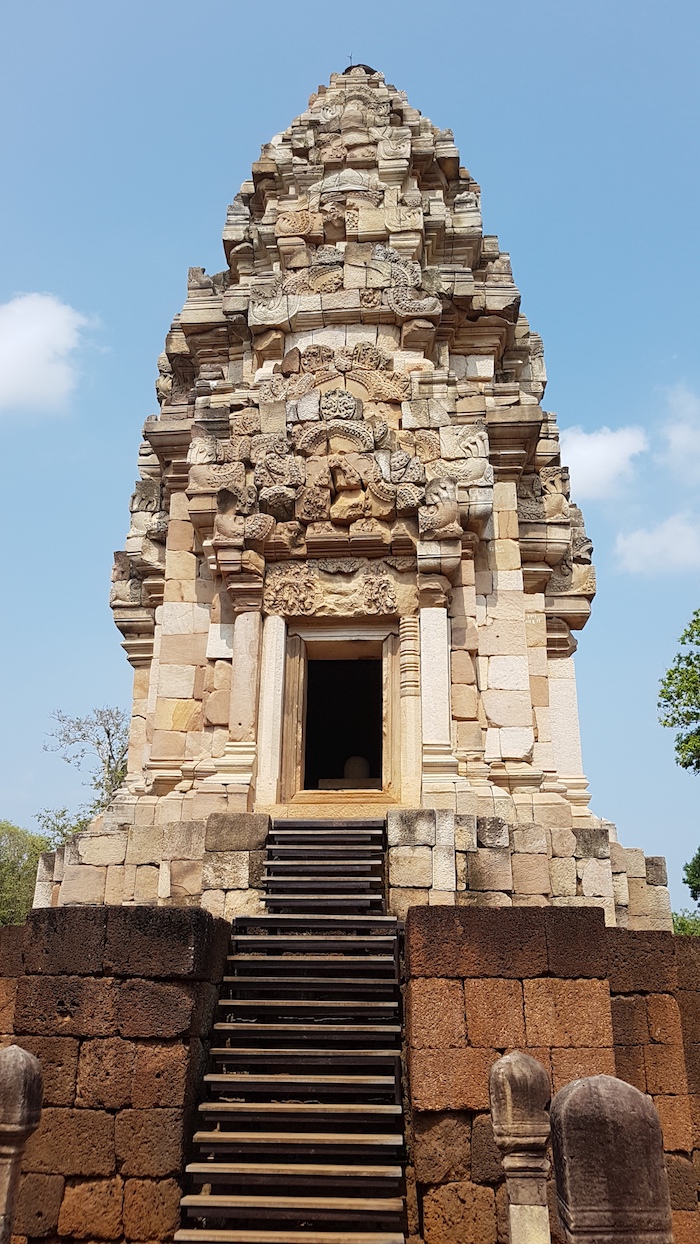Prasat Sadok Kok Thom consists of three buildings all are facing the east. Ponds enclose all these prasats (castles) with two layers of glass walls also enclosing the structures. The Khmer believed that east is the direction of light and holy things while west is the direction of death.
The outer layer of the prasat was made of laterite, while the inner layer was made of sandstone. The main prasat structures were made of sandstone. Arches were constructed only on the east and west side. Two small prasats made of sandstone are in front of the main prasat. There is a square shaped pond on the east of the prasat. Inside the main prasats, there is a Hindu phallic Symbol of Creative Power.
An impressive processional walkway, flanked by pillars, leads to the main building. Various sculptures around the prasat depict the Naga (mythical serpent).
The discovery of two stone inscriptions with Khmer characters on them reveals that the prasat was built in 857, and renovated in 1052 by Phra Chao Authaitittayavoraman II. These stone inscriptions describe the history of Brahman and the Khmer holy god. Today, they are preserved at the National Library, Department of Fine Arts.
- Extensive work has been done in and around the wat.
- The processional pathway to the temple.
Originally dedicated to the Hindu God Shiva, Sadok Kok Thom was later converted to a Buddhist temple.
- Sadok Kok Thom
- Khmer style temple.
Sadok Kok Thom has been extensively restored to the way it is believed to have looked. Original material was used as much as possible but wherever it was not available newly made blocks were used. The colour difference between old and new is quite obvious.
- A side wing of the temple.
- Main part of Sadok Kok Thom.
The Khmer Empire ruled much of South East Asia from the end of the 9th century to the 15th century and extended into modern day Thailand to Phimai, Buri Ram and further north west.
© Kim Epton 2023
365 words, ysixphotographs.
Feel free to use any part of this document but please do the right thing and give attribution to adventures.net.au. It will enhance the SEO of your website/blog and Adventures.
See Terms of Use.






